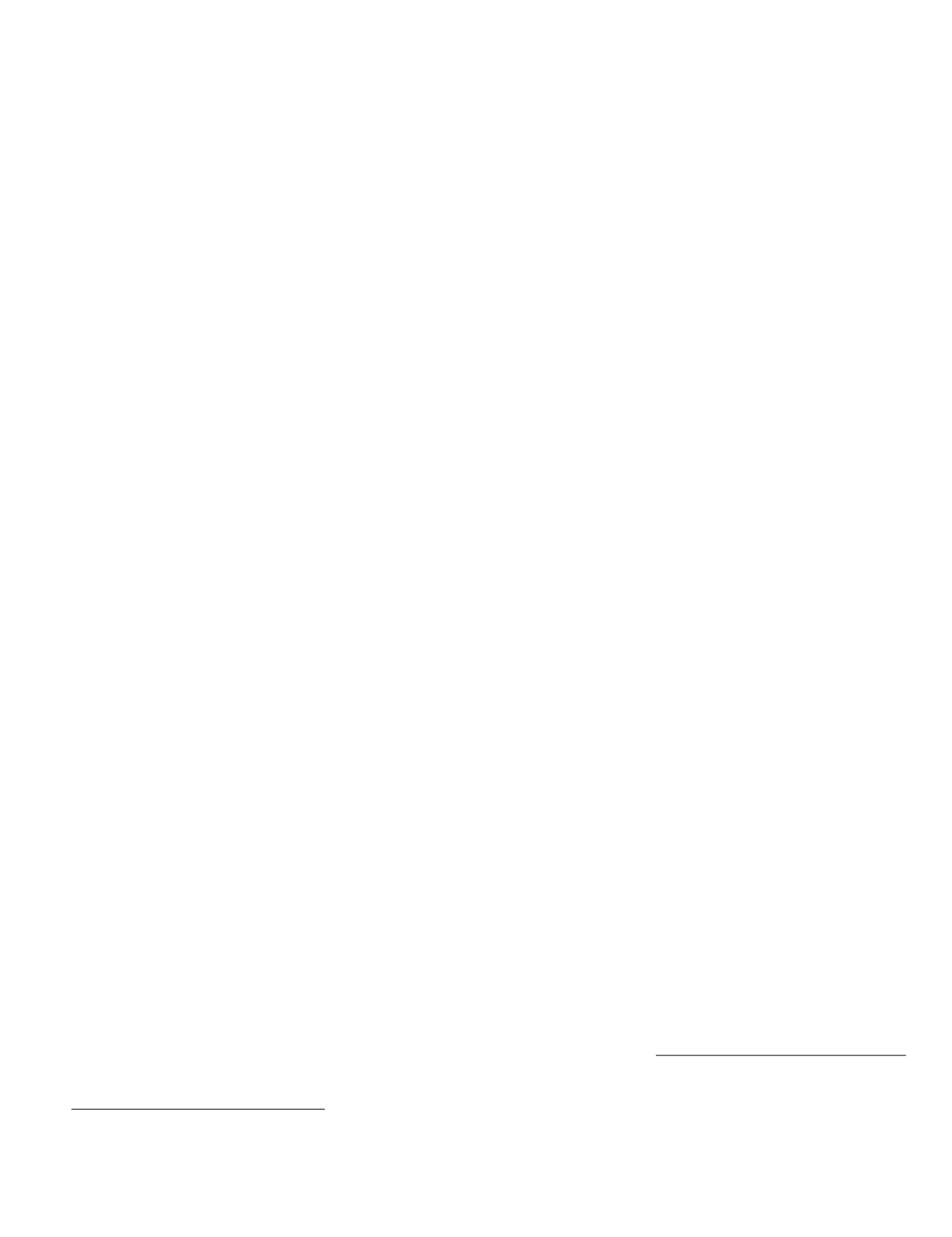
Automated Class Labeling Of Classified
Landsat TM Imagery Using a Hyperion-
Generated Hyperspectral Library
Ilia Parshakov, Craig Coburn, and Karl Staenz
Abstract
Image classification remains dependent on user intervention
for class label assignment. Whether that effort takes place in
advance of or post classification is immaterial. This paper
explores a novel approach to automating the assignment of
class labels using a normalized spectral distance measure and
a hyperspectral library. The technique resulted in an automat-
ically labeled agricultural map with an overall classification
accuracy of 51 percent, outperforming the manual labeling
(40 percent to 45 percent accuracy, depending on the analyst
performing the labeling) and the Spectral Angle Mapper clas-
sifier (39 percent), and was comparable to, or lower than, the
classification accuracy of a Maximum Likelihood supervised
technique (53 percent to 63 percent) depending on the ana-
lyst. The newly developed class-labeling algorithm provided
better results for the majority of targets while having similar
performance to manual labeling on targets that are particu-
larly difficult to differentiate in a purely spectral manner.
Introduction
Our continuing challenge in remote sensing is the lack of fully
automated image analysis procedures that would allow us to
extract useful information from the tremendous amount of
recorded data. While vast quantities of data are collected every
day (Behnkre
et al.
, 2005), only a small portion of these data
are actually used to derive information products. In map-
ping, which is one of the main applications of remote sensing
data, such semi-automated image processing routines as the
Iterative Self-Organizing Data Analysis Technique (
ISODATA
)
unsupervised classification and Maximum Likelihood super-
vised classification developed decades ago are still commonly
used (Tou and Gonzalez, 1977; Swain and Davis, 1978; Xie
et al.
, 2008). The use of these procedures implies that infor-
mation extraction has to be performed by an expert in order
to produce an accurate result. Involvement of analysts makes
these processes slow and potentially error prone depending on
the analysts’ skill-level (Lang
et al.
, 2008). This has created a
technology bottleneck with petabytes of imagery on one side
and a limited number of remote sensing analysts on the other.
Automation of information extraction routines is the only way
to eliminate this asymmetry (Datcu
et al.
, 2003; Huang
et al.
,
2012).
Image classification is a fundamental information ex-
traction procedure in remote sensing that is used in mapping
of land-cover and land-use types. Commonly used image
classification procedures can be divided into supervised and
unsupervised techniques (e.g., Xie
et al.
, 2008; Jain, 2010)
based on the manner that the training data are gathered and
used by a specific classification technique. In supervised
classification, the analyst selects training areas which are then
used by the classifier to group image pixels into classes using
a variety of techniques; the classes are defined
a priori
. There-
fore, the quality of the resultant classification is dependent
on the ability of the analyst to select representative training
sample areas, as well as a number of other factors (e.g., spatial
heterogeneity and pixel size; Chen and Stow, 2002).
In unsupervised classification, classes are produced auto-
matically by grouping pixels into spectrally similar clusters.
Once this process is complete, the user has to manually label
the classes as one land-cover type or another. This results in
a subjective and error-prone classified image product as the
user is depending on a variety of heuristics to arrive at a class
label decision.
While the process of grouping pixels into spectral clusters
offers the advantage of defining statistically pure groupings,
these groups may or may not correspond to a single land-cov-
er type. For a given number of classes, supervised classifi-
cation routines often produce better classification accuracy
results due to the analyst’s ability to extract spatial clusters,
which contain subtle statistical differences that enhance
classification of spectrally similar but functionally different
land-cover types. However, unsupervised approaches are
preferable to supervised approaches over large areas because
of the time and effort required to collect training samples and
because unsupervised techniques can capture all of the image
spectral variation, which is important if land-cover types vary
spectrally in space (Congalton and Green, 2009).
A number of authors, such as Kelly and White (1993),
Driese
et al.
(1997), Homer
et al.
(1997), Vogelmann
et al.
(1998), and Cihlar (2000), advocate for the use of the hyper-
clustering approach (producing a large quantity of clusters)
when performing unsupervised classification to provide many
different spectral classes of the same land-cover type which
are then merged. If the number of clusters is much greater
than the number of different land-cover types in the scene, it
is more certain that spectral classes do not contain multiple
thematic classes. In past studies, this approach has led to
unsupervised classification accuracies that rival supervised
classification accuracy statistics (Cihlar, 2000).
Although the benefits of generating more clusters with
subsequent merging was discovered in early years of satellite
Alberta Terrestrial Imaging Centre and Department of Geogra-
phy, University of Lethbridge, 4401 University Drive, Leth-
bridge, Alberta, Canada, T1K 3M4 (
.
Photogrammetric Engineering & Remote Sensing
Vol. 80, No. 8, August 2014, pp. 797–805.
0099-1112/14/8008–797
© 2014 American Society for Photogrammetry
and Remote Sensing
doi: 10.14358/PERS.80.8.797
PHOTOGRAMMETRIC ENGINEERING & REMOTE SENSING
August 2014
797


